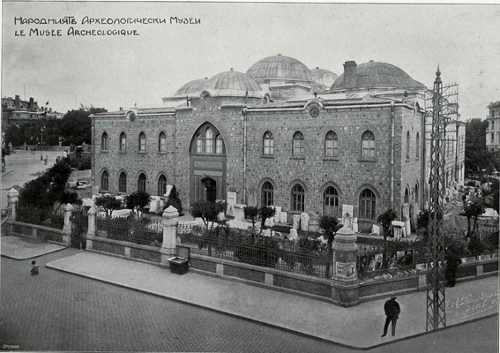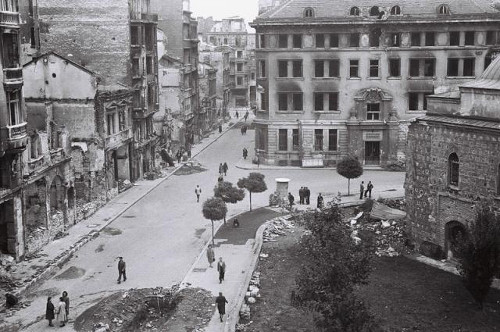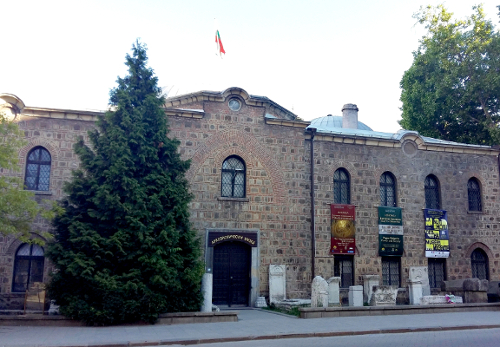2, Saborna Str.

The oldest state museum of Bulgaria – successor of the Sofia Public Library’s Valuables Department, was established in 1892, under the title “National Museum”. For its future exhibition and storage for the cultural valuables, it received the building of Buyuk Mosque, erected in 1494 by order of the Grand Vizier Mahmoud Pasha. Its interior, influenced by the Eastern Christian art of Egypt, Asia Minor, Armenia and, above all, Byzantium, is divided into nine squares, supporting nine identical in size lead domes. The walls of bound in mortar stone blocks set in brick frame – the so-called ‘cell construction’, are an exquisite example of distinctively Ottoman construction technique.

Following renovation and reconstruction, on May 18, 1905, the National Museum was ceremonially opened by Prince Ferdinand I and the Minister of education, Dr. Ivan Shishmanov. In 1909, the cultural institution received a new name – National Archaeological Museum, and in 1912 was broken ground for its future building. The wars for national unification (1912 – 1918) and funding deficits halt construction. In 1939, on the site was raised the building of the Bulgarian National Bank, with two new wings added for the museum.

The museum building was severely damaged by incendiary bombs during the British-American bombing on Sofia on March 30, 1944. The numismatics treasury, the roof, the windows and the furniture of the administrative wing, as well as parts of the documents and library fund perished in the fire. The exhibition hall became unusable; the museum found itself without heating, illumination or water; damage estimates exceeds 100 000 leva. It was not until 1948, following full renovation and restoration of the damaged exposition, that the museum could open again for visits. Today the National Archaeological Museum preserves the richest archaeological collection on the Balkan Peninsula.